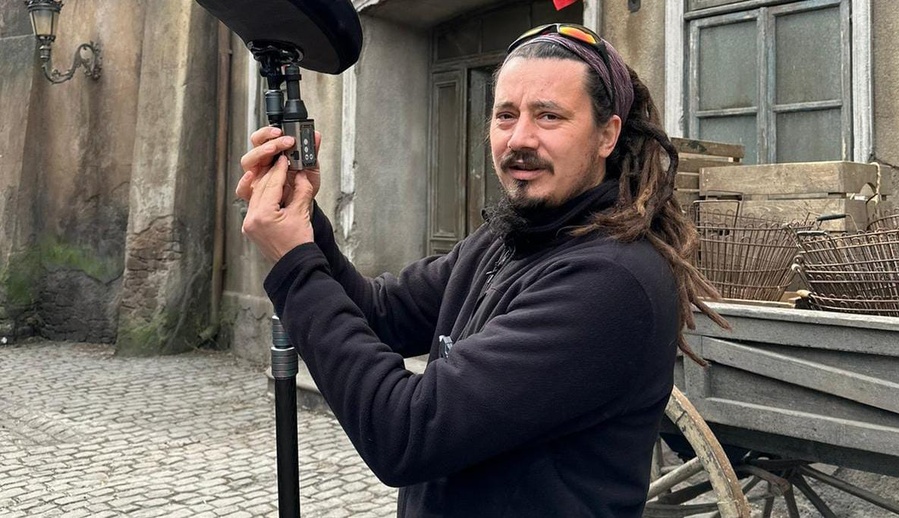Production sound mixer Liviu Lupsa, currently at work on the Netflix series Wednesday, which is shot both in studio and on location in Buftea, Romania under the direction of Tim Burton, captures the show’s dialog with a range of Lectrosonics gear, including SRc Series dual-channel receivers, a VR Field modular receiver system, SMQV beltpack transmitters, and more.
Buftea, about 20 kilometers outside the capital city of Bucharest, was a small village some 70 years ago when the Communist government of Romania decided to build studios that would produce feature-length movies. The studio complex became the largest in Eastern Europe and fueled the growth of a town of film production workers and their families, where generations follow generations in production work.
The Iron Curtain fell more than 30 years ago, but Buftea Studios and its workforce live on producing not only Romanian-language film and TV but also productions in English and other languages. Lupsa was born into the Buftea tradition and is now sought after for sound work, with credits that include The Contractor starring Chris Pine, The Romanoffs featuring Diane Lane, Flowers in the Attic: The Origin with Jemima Rooper and Max Irons, and Mirrors with Kiefer Sutherland.
“I was lucky. Very lucky,” Lupsa says of his entry into production sound. “I had the luck not to be a CPA or something like that.” He started out 20 years ago handling audio cables during shoots, then became a boom operator, and worked his way into overseeing mixing and recording production sound. He estimates that he’s been using Lectrosonics products for about 12 years, introduced to the brand in 2007 working with Keith Garcia, a sound mixer from Los Angeles. In addition to the forementioned components, his toolkit also includes SMWB and SMDWB miniature wideband transmitters, HM and HMa plug-on transmitters, IFBT4 IFB transmitters, and IFBR1, IFBR1a, IFBR1b, and IFBR1c IFB receivers for wireless microphone and IFB systems.
Lupsa points to the equipment’s reliability and performance, even in difficult conditions, citing one scene in The Contractor that was shot in a busy intersection in Bucharest. There were about 50 vehicles circling the intersection — cars, trams, motorcycles, etc. — and he was working in the middle of it as Pine’s character spoke on a phone while coming out of a metro station and walking around the intersection himself. It was a long continuous shot, and a mishap in sound pickup would necessitate restarting the whole scene. Despite the many vehicles breaking the line of sight, Lupsa had no problem picking up the signal from the SMQV transmitter worn by the actor.
A trend among production sound professionals, including Lupsa, is to deploy HMa plug-on transmitters on boom mics because they eliminate cabling, which is especially useful in shoots that today are often mobile. When he fits talent with his SMQV belt-pack transmitters, he pairs them with DPA 4060 and 6060 lavalier mics. He works from a sound cart that contains his SRc receivers and directional antennas, along with a Sound Devices Scorpio mixer-recorder, but he can also operate from a bag if he needs to go portable.
Next on the horizon for Lupsa is a Disney+ series to be shot in Spain, where his Lectrosonics gear will again be in his kit.




















